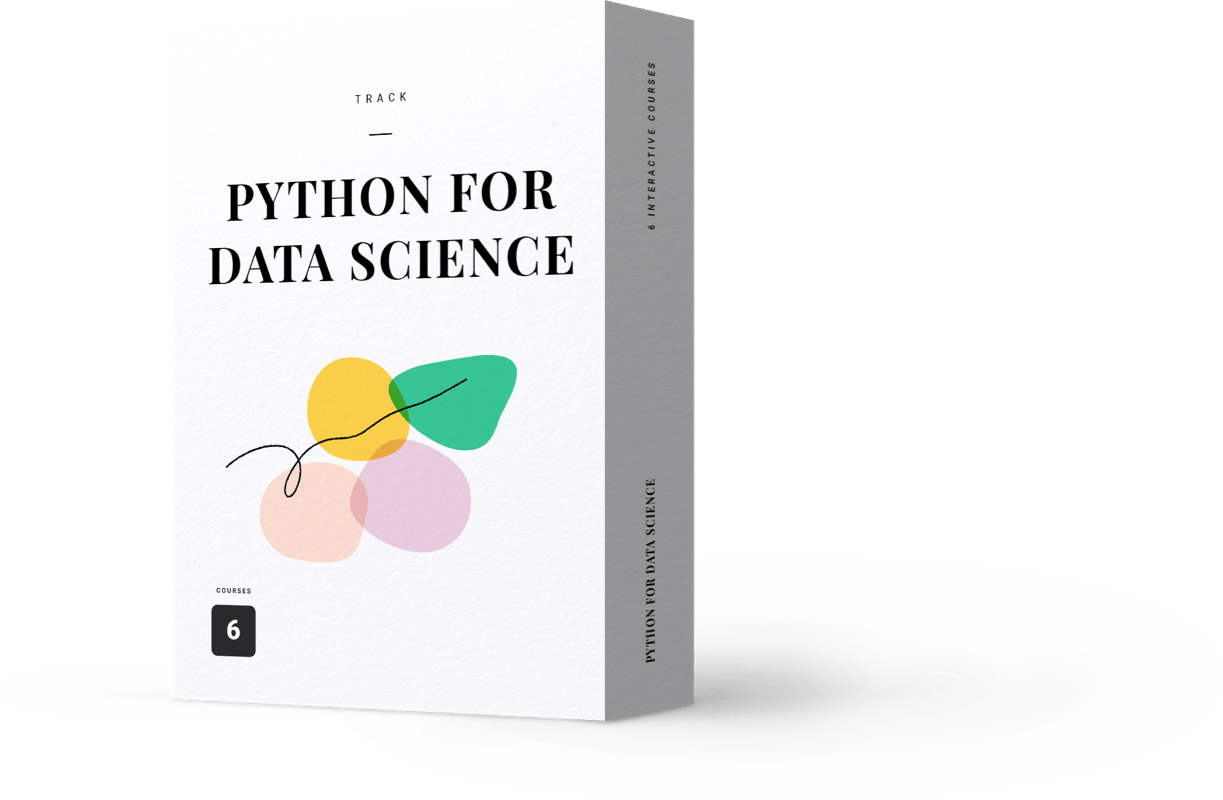Our website uses cookies. By using this website, you agree to their use in accordance with the browser settings. You can modify your browser settings on your own. For more information see our Privacy Policy.
Track
BasicEver wondered what you need to do to start analyzing data in Python? Then, this mini track is the answer! It is for complete beginners with no background in IT. Come join us!
Start learning85 free interactive coding challenges
Lifetime access
limited to this track only
$145
Unlimited lifetime access
to all 13 present and future courses
$ 99
$ 349
72% OFF

Data science is a multidisciplinary field that uses math and programming to extract knowledge and insights from data. Data scientists use statistics, analytical skills, machine learning, and domain knowledge to deepen their understanding of the world around us through data. Data science is becoming more popular; every day, gigabytes of data are generated and processed.
Python 3 is the most widely used and fastest growing programming language in the world today. This is not a surprise, because it is perfect for data analysis and data science. This mini track will teach you the basics of Python. You will get to know the foundations of programming used in data science: what variables are, how to invoke functions, and how to write your own functions. You will discover the basics of popular Python libraries for data science: pandas and matplotlib. The pandas library is for statistics and data processing; matplotlib is a data visualization library.
This mini track lays the programming foundations needed to start working in the field of data science. After completing this mini track, you will be able to write simple data processing scripts and data visualizations. You will be prepared to further your education in programming, in Python or in another language of your choice.
We believe that the right way to learn programming is through practice. Our courses are fully interactive for this reason. Each exercise has a little bit of theory, an example, and a problem for you to solve by writing your own code. You will have faced many coding challenges by the end of each course.
What’s in it for me?
Objectives:
Who should take this mini track?
Requirements:
Coding challenges
Learn the world’s most popular data analysis language so you can mine through data faster and more effectively. No IT background needed.
Coding challenges
Become fluent in string operations—a must-have for anyone working with Python!
Coding challenges
35 exercises to learn what is JSON, why some compare it to XML, and how to read and write JSON files in Python.
Coding challenges
Learn how to work with the Python CSV module, and automate simple work tasks! Find out how to open, read, write a CSV file in Python.
Coding challenges
Learn how to work with openpyxl, a popular Excel processing library in Python! Find out how to open, read, and write an Excel file in Python.